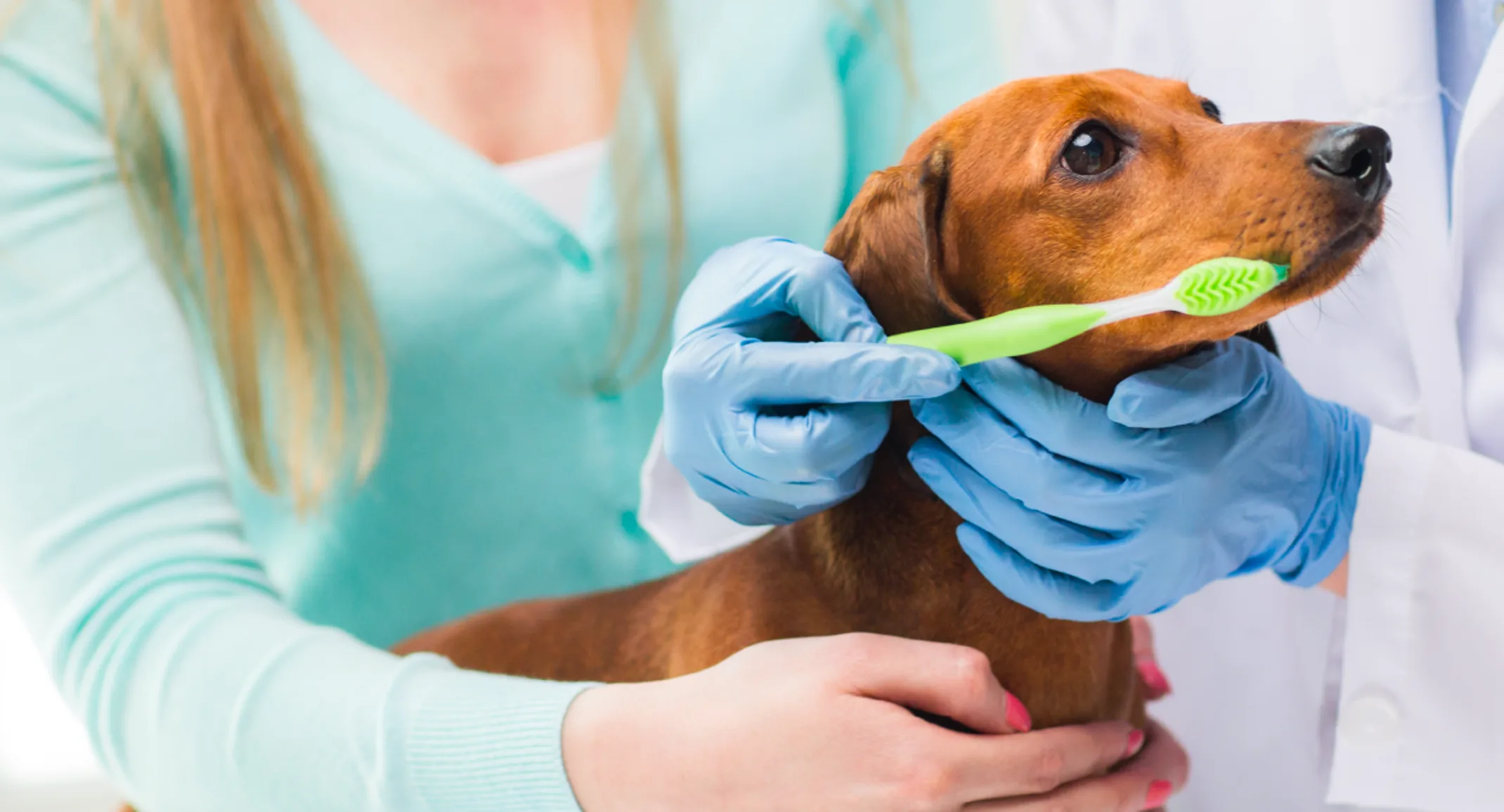You might wonder how dental health affects your pet. Dental disease reveals itself mostly as oral pain. In pets, oral pain can be difficult to recognize but often dysphagia (difficulty eating) is the easiest symptom of pain you might notice. Pets will enthusiastically run to the bowl at mealtime but then walk away without eating since it is uncomfortable to chew food. Other signs are partially chewed food left around the food bowl that wasn’t the norm before. Your pet might tilt its head while eating to shift the food away from sore areas. A chattering jaw often occurs when a pet hits a painful area while chewing. Also, some will shy away from hard foods like kibble and prefer a softer diet like canned foods. Others might lose interest in playing with toys. An additional symptom of dental disease is halitosis (bad breath) which is easy to detect and often the result of dental disease. Another concern with oral health is the potential for bacteria to enter the bloodstream from gum infections (periodontal disease). This can potentially lead to damaging the kidneys and or heart valves.
Veterinary dentistry is different from human dental care in one major way. The only way to evaluate the mouth fully is by anesthetizing the patient. Fully evaluating the oral cavity involves cleaning above and below the gum line (gingiva), probing around the gingiva, and x-raying each tooth (crown and root). Cleaning below the gum line can only be properly done on an anesthetized patient.
Periodontal disease is the main problem seen in dogs. It starts as inflammation in the gingiva (gingivitis), seen as a red line where the gum meets the tooth. As it progresses the redness increases, the tissue swells, and gums easily bleed. What is not outwardly visible are the changes below the gum line. The infection gradually works its way down the socket (alveolus) where the bone is lost and eventually the tooth is loosened. At the point where half of the alveolar bone is lost, the tooth will need to be extracted. Extraction often involves gum surgery to properly remove the tooth roots. Teeth in cats and dogs have one to three roots (occasionally four). Even with anesthesia nerve blocks are advisable; since it reduces the amount of general anesthesia needed and the pain prevention continues even after the general anesthetic drugs have worn off. Self-dissolving sutures are often used.
Cats also develop periodontal disease but have two additional common problems. One being oral inflammation called stomatitis. This can sometimes be treated with cleanings and medicine but in other cases, multiple extractions are needed. Another oral disease of cats is tooth resorption called Feline Odontoclastic Resorption Lesions (FORL). Teeth with this condition can only be treated with full extraction or removal of the crown depending of the appearance on the x-ray.
Dental health is an important part of overall health in pets. After treating oral disease owners often see a noticeable improvement in their pet’s quality of life. Such as eating eagerly, being more active, playing with toys again, or just getting the “spring” back in their step.
At your next visit, ask your veterinarian about your pet’s dental health and the best plan to prevent and treat dental disease.

